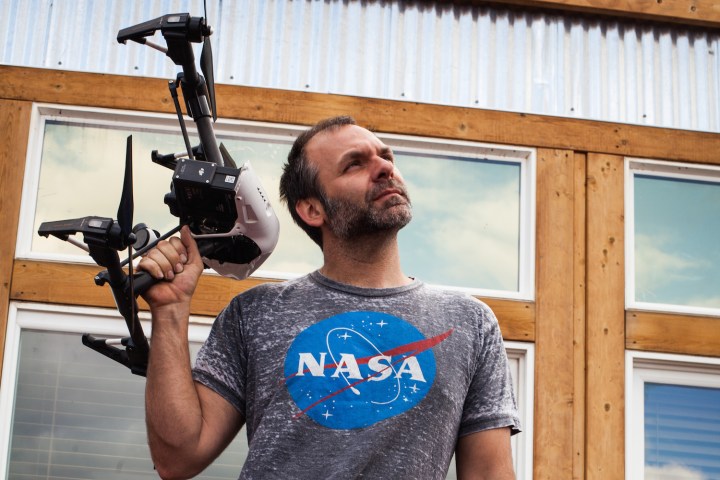
Long gone are the days of indie filmmakers blowing half their budget on a helicopter for that all-important aerial shot. Quadcopters are where it’s at, their flying and camera capabilities now good enough for capturing incredible footage that can wow audiences – subject to the director’s artistic vision and flying skills, naturally. Tim Cash, a filmmaker from Bend, Oregon, has been using the technology for around a year now and although music videos are his specialty, he recently had the chance to include some carefully crafted drone shots in his debut feature film, which lands this summer.
DT got in touch with Tim to find out more about how drones have helped take his work to a whole new level, and about his experiences with the technology along the way.
How long have you been using drones in your work?
“They’ve brought production values way up.”
What impact have they had?
They’ve brought production values way up. Always going for the bigger-than-life look.
What are the biggest challenges for you when it comes to filming with a drone?
Well, I would have to say the attention it brings. When shooting with my camera crane I get looks and interest but once they see this thing hovering, then flying over the ground at 60 mph, people get interested real quick. Mostly because they’ve never seen anything like it. I personally like to stay below the radar but drones just bring you more attention. And then there are the legalities. That’s all still happening, so we’ll see where things go in the next couple of years.
How much training did you need to get proficient at flying the drone?
Not much at all. I’ve been flying for a year and have about 200 hours in the sky. I have experience operating a crane with a camera on the end, which involves similar controls. That said, I’m still learning and the camera moves only keep getting better and more intricate.
What kind of mistakes did you make early on when using drones in your work?
Well, I’ll start by saying, “These things can be dangerous!” I started flying with a huge fear of hurting someone or damaging the craft itself. In all it costs around $4,000 for everything, so sending it to the ground is not an option. I’m a very conservative flier and safety is always the top priority. When I first started piloting, I experienced a few near-fly-aways at 200 feet; I had to fight with the controls to rectify the problem and it was scary at the time.
Before drones, how would you get aerial or elevated shots?
“Advice: Don’t crash it into people and ruin it for the rest of us!”
On one particular shoot a few years back, I used a helicopter. The pilot and the chopper, plus the cameraman, camera, and gimbal, cost over $3,000 for less than an hour in the sky. And you can’t get a helicopter nearly as close. I also have a 20-foot camera crane which has set me apart from most of my competition. So I’ve been doing flying shots for a while … just not without strings.
Drones produce such stunning footage that it must be hard to not use them during an outdoor shoot?
I’ve always been a variety guy. There’s a lot you can do with a drone but the trick is definitely not to overuse them. In the right situation they can set up a scene or add some serious action to another. We just released a trailer (below) for The Astronot movie, which has quite a few drone shots in it but we’re trying to get butts in seats so we really wanted to wow them with some cinematography right out of the gate!
Could you tell us something about that gorgeous sweeping drone shot at the start of The Astronot trailer?
Ha! Yeah, when it comes to flying the drone, I’m a send-the-bike-down-the-road-and-get-as-many-shots-as-I-can-while-the-bird-is-in-the-air kinda guy. I didn’t really know what I was getting until I saw it in the monitor, then it was all about the dance with the bike – keeping it smooth and keeping the bike framed artistically, all the while flying a multi-rotor aircraft. The second part tends to leave your mind especially when you have a wide-open area to fly in with no obstacles. When I have to fly around or through things, that’s when my heart palpitates.
Below: One of Tim’s music videos using drones, and drone shots, as part of the story:
What improvements would you like to see made to the currently available remotely controlled copters?
It’s already happening – better camera! They just released a new camera for the Inspire 1 with a great big sensor and it shoots RAW. I’ll probably upgrade to it sooner than later.
And finally, what advice would you give to filmmakers looking to include drone photography in their work?
Don’t crash it into people and ruin it for the rest of us!


